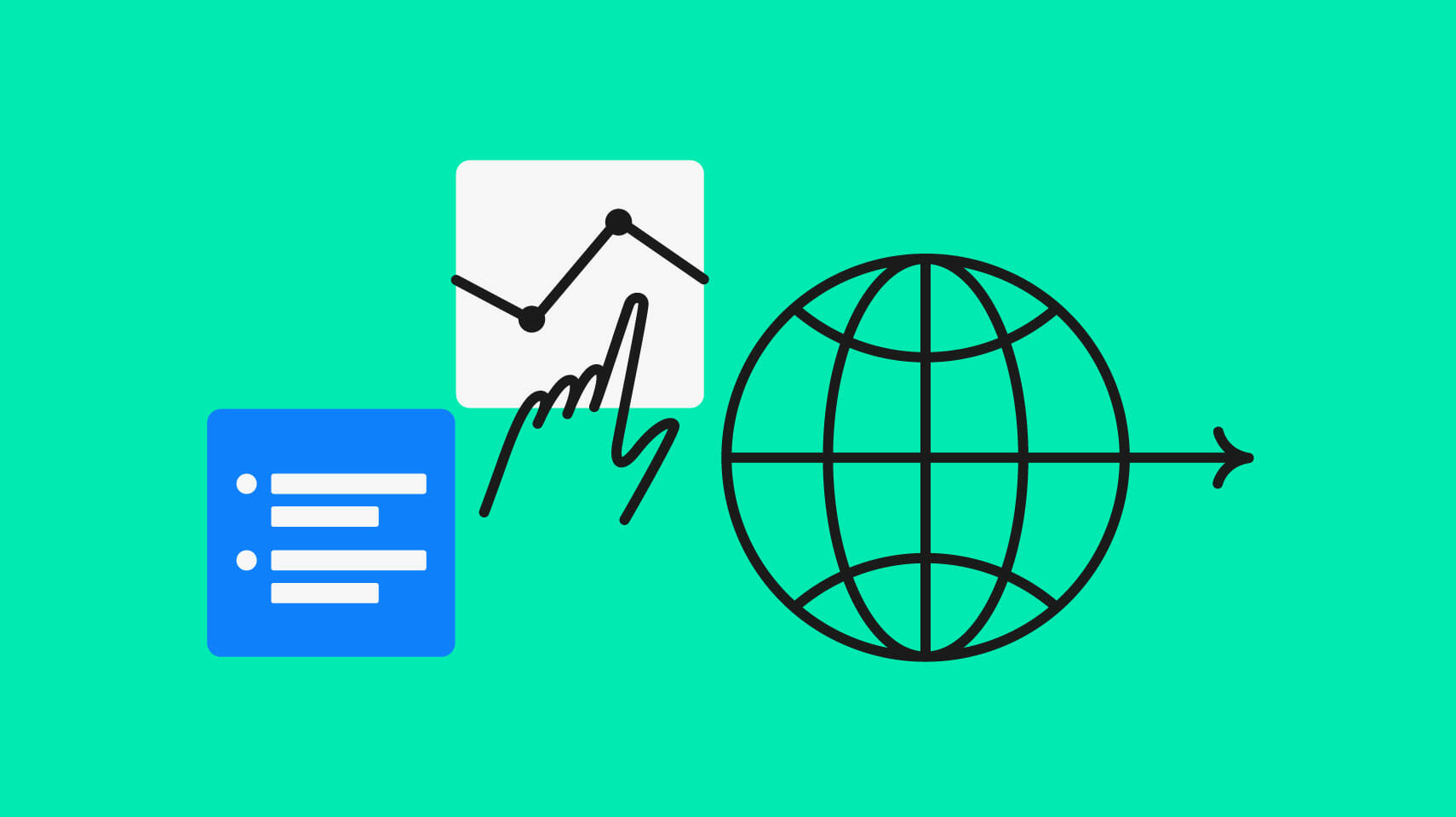Global business
How to Master Local SEO for More Customers Worldwide

Whenever you roll out a different language version of your website without taking care of local SEO, you are shooting yourself in the foot. Failing to consider local keywords, backlinks, and social media can cost you valuable site visitors. You might invest a considerable budget to reach new customers across the globe and increase your download rates through localization, but if you fail to get their eyes on your website—all your efforts are in vain.
Is it possible to compete as a foreigner in a foreign country? Of course, it is! You just have to be better than the competition—and with close to 2B websites out there, that’s a lot of noise to cut through. You’re going up against local competitors who understand your target market better than you. And you’ll also have big international companies competing on your keywords.
6 top tips for Localization SEO
Get the message right
According to CSA Research, it’s vital to get your message right in every market you compete in. More than 60 percent of non-native speakers rarely or never buy from English-only websites. There are enough stats, facts, and data on why you should be localizing, but not so much information about what to do to get foreign visitors to reach—and stay—on your site. Making your content available in different languages isn’t going to be enough. You have to do more.
Encourage trust
One of the highest causes of bounce rates is misleading your site visitor with your title or metadata. How many times have you clicked on a curious, sensational, or interesting-sounding title, only to find out the article is about something else entirely? The same happens to foreign visitors when you promise them an exceptional user experience and fail to deliver. It’s great that you’re encouraging visitors. But not if you can't create trust. Running a bunch of ads in the target language isn’t enough. If the localized version of your website reads like a kick in the head, they’ll be turning away immediately. The absolute worst mistake you can make is only partially localizing your website. Your new potential leads will feel betrayed and confused if they’ve read your homepage, like what you’re selling, click on more info... then feel like they’ve landed in a foreign land.
Enhance user experience
Mastering local SEO starts with mastering the user experience (UX). You need to pay attention to all the details in each country you localize for. Make sure that the currency is displayed in the right unit. Dates and time formats, weights, and other measurements need to be metric for Europe and imperial for the US. Google and other search engines take into account metrics like time spent on the page, or “site stickiness.” If people are coming but not hanging around, your local SERP will go down and along with it, your visitors. Ensuring an optimum user experience has a positive effect on your localized SEO. When visitors get a good impression of your site, they’ll want to share it, bookmark it, return to it, and link to it. All this behavior will aid your local SEO.
New country—new rules
Another major error you can make with local SEO is assuming that the same rules apply to one language. Consider the differences between an English speaker from the US and one from the UK. Americans take vacations, while Brits go on holiday. You may already know that using the same keywords in the USA and the UK can backfire. So, why should it be any different when it comes to Spanish spoken in Colombia and Spanish used in Spain? Or French in France and French in North Africa? The success of your website localization project and local SEO depends on your use of the right keywords. Not all countries use the same social media platforms or search engines. In China, WeChat and Weibo are commonly used in place of Facebook and Twitter. Baidu is the top search engine, and Google isn’t even an option! Competition and promotion laws vary from country to country. Make sure you’re complying with the red tape if you don’t want to face a ban.
On-page optimization for local SEO
The key to on-page optimization for localized SEO lies in your choice of words. Keywords. You know, the ones that work for you in your home country? Except different. Whether you spend stacks of cash on PPC and social media campaigns or make your anchor texts work for you; you need to know what people are searching for. Here’s a news flash for you, too. Choosing the right keywords isn’t necessarily the job of the translator. The target language will come naturally to them. But they may not be completely au fait with the nature of your business. Translators might not search for your particular product and may only guess at the relevant terms to use.
If you can stretch your budget to include expert local advice and marketing consultation, your localized SEO will greatly benefit. At the very least, ask some customers in the region of your choice and check out the keywords your competitors are bidding on. Remember that the number of characters available in your PPC campaigns is limited. You need to use them wisely and make each character count. I can’t stress the importance of this enough. If you don’t get your keywords right, you won’t get noticed. Period.
Localized landing pages
If you don’t have the budget to get every single page translated, go for localized landing pages. As already mentioned, be sure to avoid a visitor clicking for more info and landing on a page in another language. This leads to user frustration and probably abandonment. However, you don’t need to get your privacy policy and terms of use pages translated. Make sure that your quote, services, and product-related pages are covered to boost localized SEO. Search engines place much higher importance on local businesses than they did before.
That makes a lot of sense. If a customer in Warsaw wants to know where they can find tires, leading them to a website in Germany will be of little use. But even as an international player, you can use local search and localized SEO to your advantage. If you have a physical office or store in the country in question, make the contact details readily available. Add a map, and get on as many local listing sites as possible. If you don’t have a physical presence in the country, don’t panic. More and more businesses are online-only these days.
You can still get brownie points from localized SEO by adding elements, such as a local telephone number. Even just localizing your content well, taking into account local speech, local holidays, local beliefs, and buying preferences will help. Germans, for example, are reticent when it comes to using credit cards. Make sure you know how local people prefer to pay and offer alternatives to suit their needs.
Other aspects to take into account for local SEO
Don’t ignore the importance of on-page optimization when it comes to your localized SEO. If you’re serious about making more sales and earning a foothold in a new country, be serious about doing it right. Make sure you consider the following elements:
URL structure
Not all languages take up the same amount of space. So, when you get your pages localized into another language, check the URL structure. Make sure it’s not too cumbersome and long. Keep it short, with relevant keywords, and make sure it’s easy to remember.
Metadata
Your nicely optimized meta titles can become long and clumsy when translated to another language. Be sure to check all your meta titles thoroughly. Are they below 70 characters, including spaces? Is the keyword at the front and are they relevant to the page? Are your descriptions unique, with 156 characters or less? Be sure not to repeat yourself in your metadata for all your pages, or you’ll risk keyword cannibalization.
Headers
Use H1 for titles, and H2 and H3 for sub-headings. Be sure to break your pages up into several headers, so your users aren’t hit with a wall of text.
Images
When you’re checking and replacing your site images for ones that are culturally appropriate, be sure to optimize them. The heavier the image, the slower the site. When you’re working with different internet speeds around the world, site speed is crucial. Be sure to name your images with a keyword and use PNG format, where possible.
Off-Page Optimization
Once your website is streamlined, optimized with the right keyword density (less than three per 100 words), and functioning smoothly, you need to work on your off-page optimization. Take things up a gear to get ahead of the competition and master local SEO.
Site speed
You may be dealing with different customers who speak another language and have varying purchasing preferences. But, one thing today's consumers have in common around the world is that they don’t like to be kept waiting. Your site speed is absolutely crucial to user experience and conversion—at home and away. According to Google, 53% of visits are abandoned if a mobile site takes longer than 3 seconds to load. At first sight, 3 seconds might not seem very long, but when it comes to the internet, you may as well stick up a notice that says, “Come back in half an hour.” Except, the chances are, users won’t be coming back. If you’ve spoken to your developers about the importance of site loading speed around the world and they have done things like:
- HTML Compress: Minified your website’s HTML
- YUI Compressor: Reduced or removed any unnecessary CSS
- Closure Compiler: Made sure your JavaScript runs faster
Then it might be time to look at using a Content Delivery Network (CDN). Instead of relying on one server to deliver your content, a CDN makes use of a cluster of local servers. This means that you can deliver an optimum user experience and load time from Shanghai to San Francisco (and everywhere in between). Site speed is also one of Google's and other search engines' ranking factors. If you want to boost your SERP around the world, make sure your site loads fast around the world. Mastering localized SEO is about realizing you need to treat all customers with an equal amount of respect and commitment.
Incoming links
To improve your localized SEO, start building up the backlinks pointing to your .de, .es, and .co.uk site versions. If you’re putting out great, localized content, you should start building up organic links naturally. But you can give yourself a helping hand when it comes to getting links. Hire an outreach manager to contact local websites, blogs and influencers. Make sure that you’re associated with any important local entities, and that you have local language websites pointing to your site. Simply using the anchor text will be of no use if the article that users click on is in English only. The same principles of link building apply to your localized SEO as they do at home. Look for authoritative websites with good domain authority. Find relevant businesses and local writers who will drive qualified traffic to your site and boost your SERP ranking at the same time.
Hreflang tags and sitemaps
Using hreflang tags will indicate to search engines that this is the Spanish, French, Mandarin, etc., version of any given page. Simply put, this is when you look at an extension of a URL and see that it starts or ends with .es, .fr or .cn. Search engines need to know this to be able to index your pages. Also, be sure to submit your sitemap in the different language versions, to ensure your localized versions get correctly crawled.
A/B testing
If you’re aiming to master and improve your localized SEO, you’ll need to keep testing your efforts. A/B testing is where you try two different versions of the same page and see which one generates a better reaction. See how your new site visitors are responding to your localized content. Sometimes simply changing a color scheme or tweaking the wording on a CTA can be enough to see conversions increase tenfold.
The takeaway
Mastering local SEO takes a lot of common sense. You need to research and understand the specifics of each new market you’re going to sell in. Ensure that your localized versions create an optimal user experience. Make sure your content is optimized on-page and off. Think about your choice of social media and promotions carefully. And make sure you use localized SEO to your full advantage to boost your bottom line!




